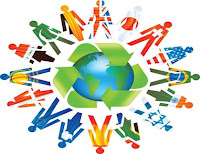I have known that the research process was complex but until I participated in this research college class, I did not understand that the amount of time that is necessary to complete a research study before it can effectively add value and new knowledge to the field; years and sometime decades have been spent completing a research study. Having the flexibility to embrace change during the process is a necessary character trait that can support the success of the research study. There are several questions that need to stay on the forefront during the complex planning process such as, how will this study impact the field of early childhood?; how will this study impact the participants?; is it possible the results of this study could be misused to support an issue that could negatively affect children and families?; and will the methods chosen support an equal partnership between the researcher and the participants to result in rich data collection?. Keeping these questions in mind may drive the decision to make necessary changes to the sampling, data collection methods or may even drive the decision to change the design from quantitative or qualitative to a mixed methodology.
The biggest challenge for me during the development of my research simulation was the refinement of my research question. With my naïve interest in protective factors needed for children to build resiliency to overcome stressors in their little lives, I was getting sidetracked with all the information at hand and losing my focus. Dr. Terry Davis, was my metaphorical ‘supervisor’ who guided me with her knowledge and experience in the development of a good research question that could produce results to positively support the field of early education. In addition to the guidance from Dr. Terry Davis, my fellow students and colleagues supported me through the last eight weeks. I would like to extend my appreciation to each of you for sharing your knowledge and experience with me.
Reference
Mackenzie, N. M., & Ling, L. M. (2009). The research journey: A Lonely Planet approach. Issues in Educational Research, 19(1), 48–60
















